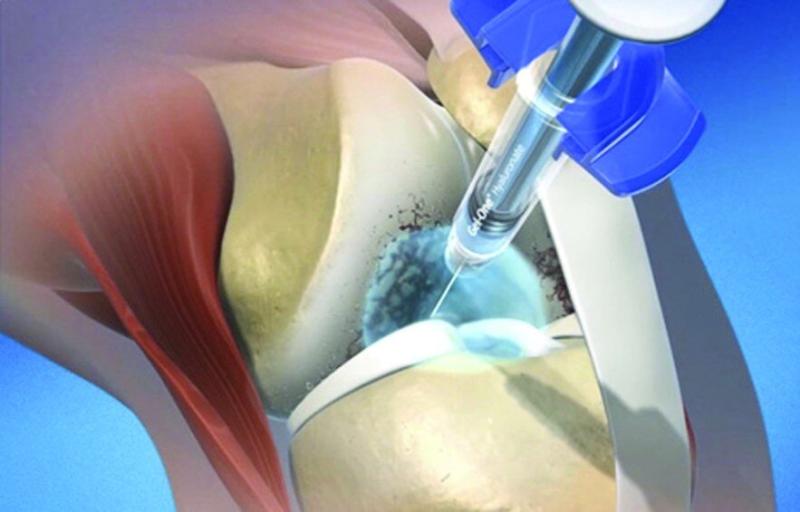Viscosupplementation, also known as hyaluronic acid therapy, is a non-surgical treatment used to treat pain associated with osteoarthritis (OA) of the knee. It involves injecting a synthetic form of hyaluronic acid, known as a viscosupplement, directly into the knee joint space.
Workings of the Supplementation
Hyaluronic acid is a naturally occurring substance in joint fluid that acts as a lubricant and shock absorber. In OA, hyaluronic acid levels in the joint decrease, leading to increased friction between bones. This therapy aims to supplement this loss by reintroducing high molecular weight hyaluronic acid into the joint. The injected hyaluronic acid lubricates the joint and absorbs shock, thereby relieving pain and improving mobility. It also stimulates production of natural hyaluronic acid by synovial cells of the joint.
Treatment Procedure
Viscosupplementation involves a series of 1-5 weekly injections directly into the knee joint space. The injections are administered using ultrasound or fluoroscopic guidance to ensure accurate placement. Different products may require a different number of total injections. Patients may experience some mild side effects like pain, swelling or tenderness at the injection site which typically resolves within a few days. Strenuous exercise and activities should be avoided for 24-48 hours after each injection.
Efficacy of Viscosupplementation
Numerous clinical studies and meta-analyses have found these to be effective at relieving knee OA pain and improving function, particularly in the short term. According to research:
- It provides statistically significant pain relief, increased function and reduction in stiffness compared to placebo injections for 6-13 weeks on average.
- Multiple injection regimens appear to offer more pain relief than single injections.
- Some of these products may provide symptom relief for up to 6 months based on studies.
- This supplementation works best for patients with mild to moderate OA rather than severe OA with bone grinding.
- Repeat courses seem to maintain pain relief for 1-2 years when administered 6-12 months apart.
While not a cure for OA, this offers a safe and effective non-surgical option to manage osteoarthritic symptoms in the short term and possibly delay or alleviate need for knee replacement surgery. However, the effects seem to diminish over time.
Types of Viscosupplements Available
Different viscosupplementation products contain hyaluronic acid from various sources like rooster combs or produced synthetically. Some commonly used intra-articular hyaluronic acid injections include:
- Hylan G-F 20 (Synvisc, Synvisc-One): Synthetic high molecular weight hyaluronic acid. Given as 3 injections, 1-week apart.
- Sodium hyaluronate (Hyalgan, Supartz): Produced by bacterial fermentation. 5 weekly injections.
- Hylan A-B-S (Durolane): Synthetic high molecular weight hyaluronic acid. Single injection.
- Calcium-sodium hyaluronate (Orthovisc): Derived from rooster combs. 4 weekly injections.
While all contain hyaluronic acid, they differ in molecular structure, concentration and treatment regimens. Product selection depends on factors like disease severity, tolerability and cost effectiveness. More research is still needed to directly compare effectiveness between products.
Safety ofViscosupplementation
Overall, this is considered very safe, especially compared to surgical treatments. Common mild side effects may include pain, swelling and tenderness at the injection site which are transient and self-limiting. More serious but rare adverse effects reported include swelling, infection, allergic reactions like rash and potential for acceleration of OA progression with repeated long-term use. As with any intra-articular injection, there is a small risk of synovitis, pigment deposits or tendon injury depending on administration technique. Products from animal sources carry a theoretical risk of disease transmission which is eliminated with synthetic hyaluronic acids. These should be avoided in patients with active joint infection, skin diseases or bleeding disorders. Proper aseptic technique and use as directed minimizes risks.
